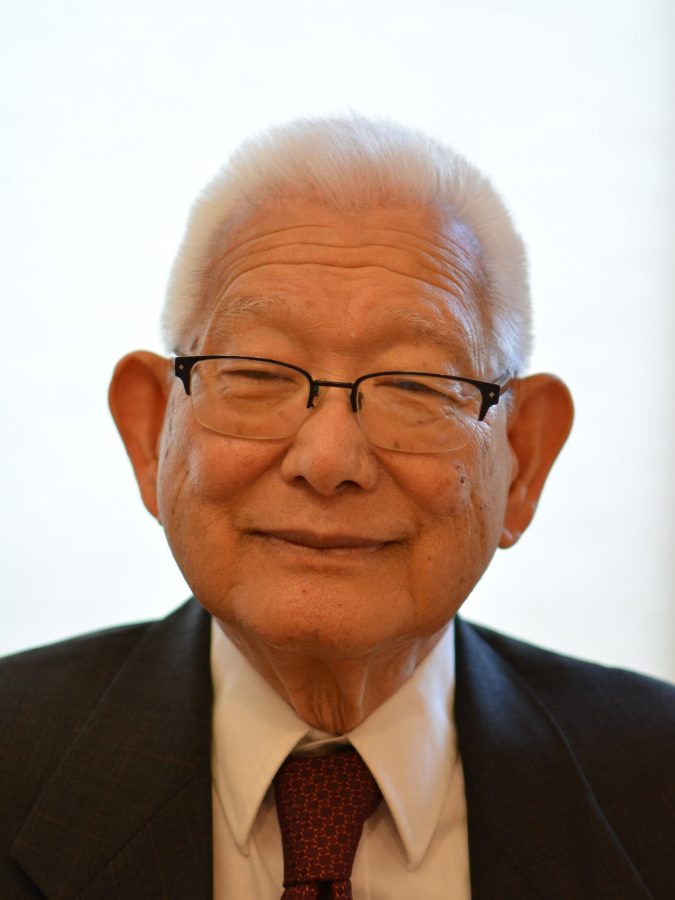History is closer to the present day than some may believe.
For Minoru Yanagihashi, former professor from the University of Arizona Department of East Asian Studies and author of “The Japanese American Experience: Change and Continuity,” the history of Japanese American internment seemed like only yesterday.
The Daily Wildcat interviewed Yanagihashi to learn more about his book, which is set to be released in spring 2020, and his expertise in Tucson’s Japanese American history.
Daily Wildcat: What made you want to write this book?
Minoru Yanagihashi: Because of my heritage and interest in it. I’ve always been interested in Japanese culture, Japanese history and Japanese Americans.
DW: In Arizona specifically, do you have anything you researched?
MY: There’s two of what the government called “relocation centers.” Gila River and Poston. Those are the two in Arizona. Then, when they were closed at the end of World War II, [Japanese Americans] had to scatter, and we call that the process of resettlement. Most of them returned to California because that’s where they came from. Most Japanese Americans at the time of the Pearl Harbor attack on Dec. 7, 1941 were living on the West Coast. That’s where they were all concentrated, but because of war hysteria and racism and the decision of the military and political leadership, the Japanese were evacuated. President Roosevelt signed Executive Order 9066 and that formerly set in motion the whole evacuation of the Japanese Americans from the West Coast. Initially, half of California, Oregon, Washington and the bottom half of Arizona were declared to be military areas and all the Japanese in those areas had to move out. A few months later, all of California was also declared to be a military area.
RELATED: Economic report outlines who is impacted by the costs of immigration arrests
DW: How many Japanese Americans were in these camps?
MY: Many critics — Japanese Americans — prefer to call it a concentration camp. I use the term internment camp. The terminology is important because it kind of gives you an image of the camps. Sometimes it’s called a relocation camp, government use concentration camps, and sometimes it’s called incarceration camp. And even prison. To go back to the number of [Japanese Americans]: Poston was the largest internment camp of the 10 [with about] 18,000. Gila River had about 13,004, to put it in perspective. [At] that time, if you took a census, Phoenix would have about 65,400. Tucson will come next with about 30,800. That puts in perspective that these were really mini cities. They were huge.
DW: What did people do in these camps?
MY: Nothing. Yeah, basically nothing. That’s the problem. You get boredom, depression. Now, the way in which the government tries to relieve that problem was what they call the leave permit. You can leave the camp in two ways: You can have employment if you qualify. You have to be vetted and checked for your loyalty. And then if you could find [an] employer [that] will vouch for you, kind of sponsor you and provide you a job, then you could leave the camp. Another category was students, young Japanese Americans who could continue their education, college or university or vocational school for example, then they could leave the camp and continue.
RELATED: SlutWalk supports transgender women, women of color
DW: What about Gordon Hirabayashi [a Japanese American convicted of resisting the curfew imposed on Japanese Americans following the bombing of Pearl Harbor]? He was a senior at the University of Washington.
MY: I talked with him when he came down here. The recreation site [Catalina Federal Prison Camp in the Coronado National Forest] is named after him. Gordon was actually arrested.
DW: For breaking curfew, right?
MY: Yeah. He became famous because he challenged the government about [the curfew]. [It] infringed on his constitutional right to serve out his sentence when the Supreme Court, you know, who’s against him. He decided he did not want to serve [out] the rest of his [sentence] in Spokane, Washington. He didn’t like the setup there. So he … requested another location, and the official says, “Well, there’s an opening in Tucson,” and he said, “I’d like to … be transferred to Tucson.” So that was fine. However, the government didn’t have funds. So how did they get him to go to Tucson? Well, they don’t, and [Hirabayashi] wanted to get out of Spokane detention. So he says, “Well, I’ll hitchhike,” which he did. [Hitchhiking] took him two weeks.
DW: He hitchhiked to go to prison?
MY: Yeah, it sounds really amazing, laughable actually. It took him two weeks and he reported in to the camp. [The camp guards] said, “We can’t take you. We don’t have your papers.” He said, “What am I going to do? I can’t hitchhike back, it took me two weeks.” They argued about it for a while. They said, “Why don’t you do something? Why don’t you go to a movie?” He said “Okay.” So he went to Downtown Tucson and took in a movie. After that, he returned and they said, “We found your papers.”
DW: What are the themes in your book?
MY: Trying to explain and describe the experience of Japanese Americans. So [with] that, hopefully, I’ll be able to at least describe so that people will understand the suffering as well as the contributions left by the second generation. Because I’m a second-generation [Japanese American], almost the last of the bunch, I thought I could speak for my generation.
Follow Ella McCarville on Twitter















